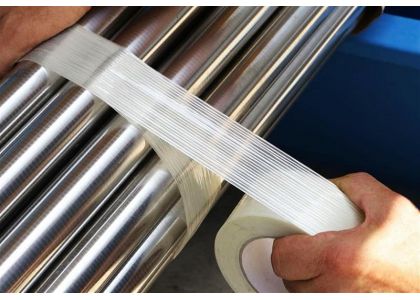
In the realm of industrial packaging, filament reinforced strapping tape stands out for its exceptional strength and versatility. Whether securing heavy loads or bundling items for shipment, selecting the appropriate tape is crucial for operational efficiency and product safety. This guide delves into key considerations when sourcing filament reinforced strapping tape, ensuring informed decisions that align with your business requirements.
Filament reinforced strapping tape is a pressure-sensitive adhesive tape embedded with fiberglass filaments, offering high tensile strength and resistance to abrasion. Commonly used in packaging, logistics, and manufacturing sectors, its applications include:
Securing heavy cartons and pallets: Ensures stability during transportation.
Bundling pipes or rods: Keeps items organized and prevents movement.
Reinforcing packages: Adds strength to boxes, reducing the risk of damage.
Selecting the right type involves understanding specific tape characteristics and how they align with your operational needs.
Features fiberglass strands aligned in a single direction, providing high tensile strength along the length. Ideal for applications requiring strong longitudinal reinforcement.
Incorporates fiberglass filaments in both longitudinal and transverse directions, offering enhanced strength and resistance to splitting. Suitable for heavy-duty bundling and reinforcement tasks.
Includes variants with specific properties such as UV resistance, moisture resistance, or clean removal adhesives. These are tailored for specialized applications like outdoor storage or temporary holds.
Assess the weight and stress the tape must endure. For heavy loads, tapes with higher tensile strength (measured in pounds per inch) are necessary to prevent breakage during handling and transit.
Consider the surface material and environmental conditions. Rubber-based adhesives offer strong initial tack, while acrylic adhesives provide better performance in varying temperatures and UV exposure.
If the tape will be exposed to moisture, extreme temperatures, or UV light, select tapes designed to withstand these conditions to maintain adhesion and integrity.
Determine whether the tape will be applied manually or with automated equipment. Some tapes are engineered for compatibility with specific dispensers or machinery, influencing efficiency and application consistency.
Choosing a reliable supplier is as critical as selecting the right tape. Consider the following:
Quality Assurance: Ensure the supplier adheres to industry standards and provides consistent product quality.
Technical Support: Access to knowledgeable support can assist in selecting the appropriate tape and troubleshooting application issues.
Customization Options: Suppliers offering custom widths, lengths, or branding can provide solutions tailored to your specific needs.
Lead Times and Inventory: Reliable delivery schedules and adequate stock levels prevent disruptions in your operations.
A manufacturing company faced frequent product damages during shipping due to inadequate strapping solutions. By switching to a bi-directional filament reinforced strapping tape with higher tensile strength and moisture-resistant adhesive, they reduced product damage by 40% and improved customer satisfaction.
Selecting the appropriate filament reinforced strapping tape involves a comprehensive understanding of tape types, application requirements, and supplier capabilities. By considering tensile strength, adhesive properties, environmental factors, and supplier reliability, businesses can enhance packaging efficiency and product protection.
For a wide range of filament reinforced strapping tapes and expert guidance, contact our team to find the perfect solution tailored to your business needs.